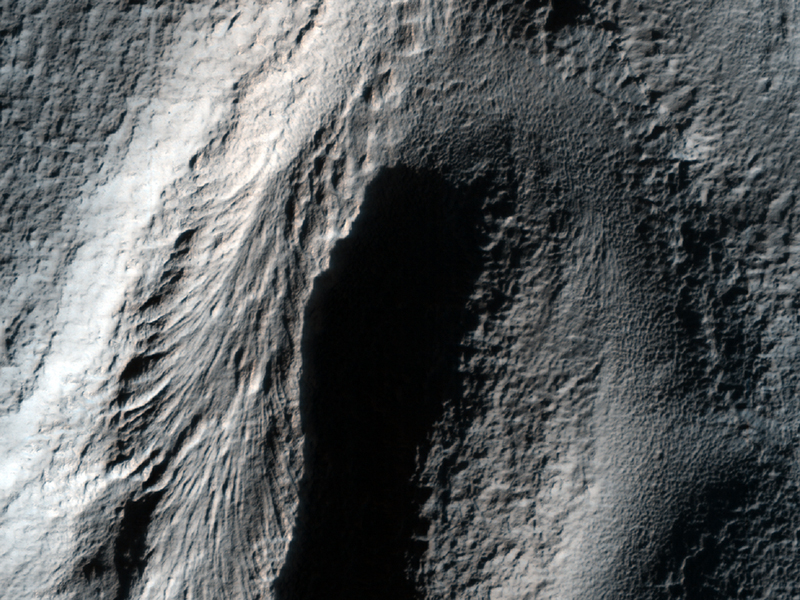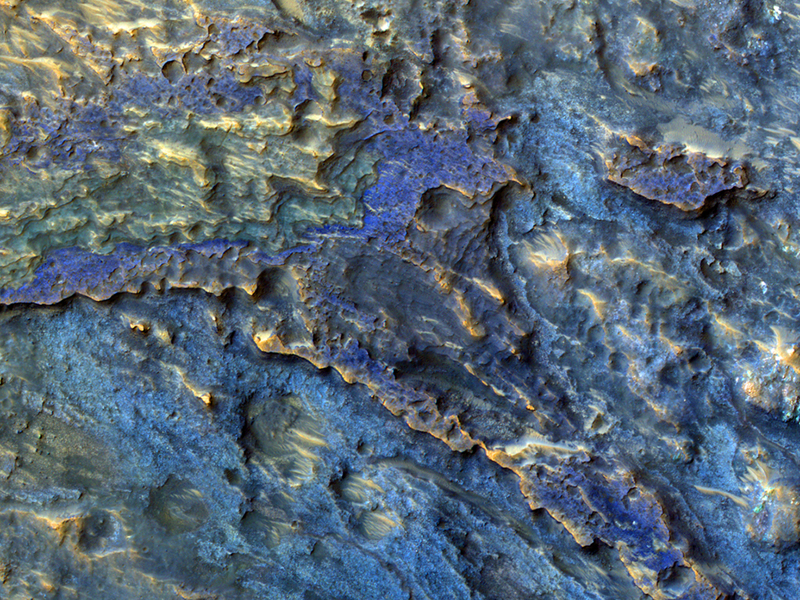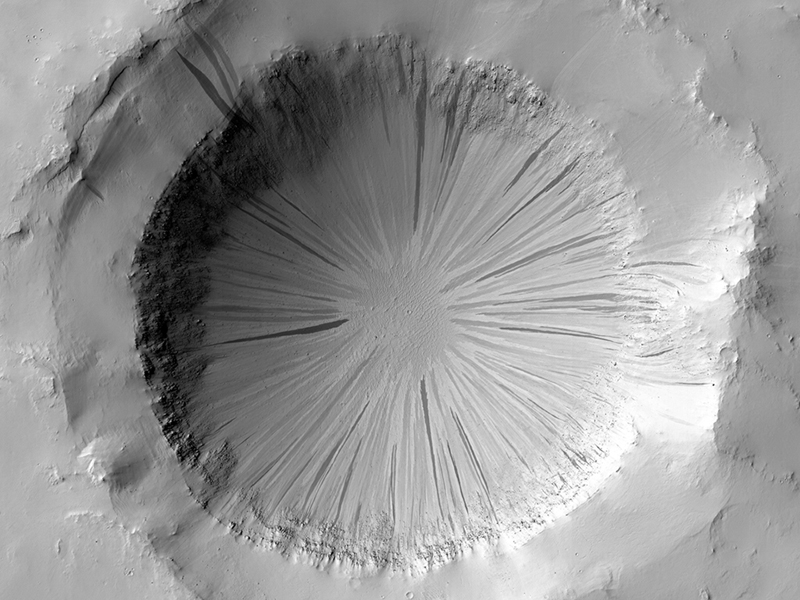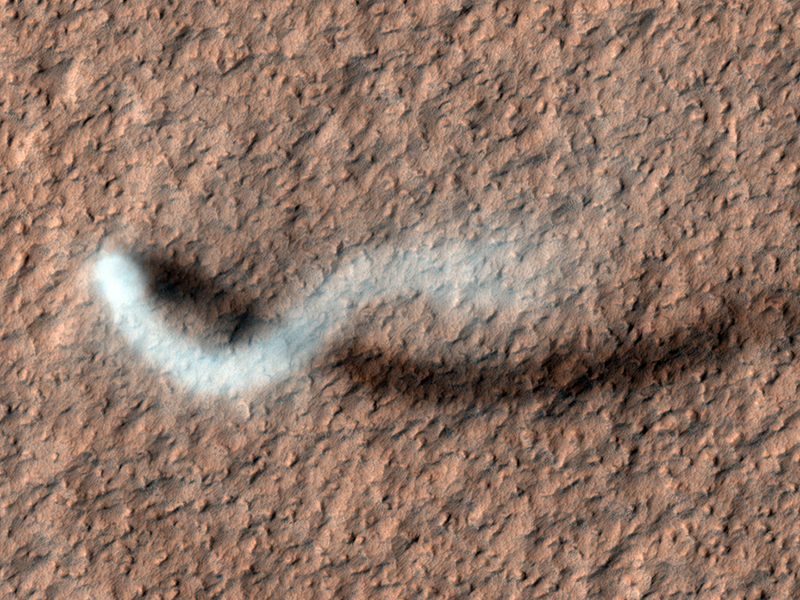Alfred McEwen wrote:Dramatic Lighting of Icy Flows (ESP_025646_1440)
This image shows flow features (tongue-shaped features in the depressions running down the slope) on the inner slope of an impact crater east of Hellas impact basin.
The time of year combined with MRO's orbit and the slope combine to provide the geometry for an image with almost glancing (very low sun) illumination. Such low-sun lighting enhances subtle topographic features and makes a dramatic image.
Other flows in this region of Mars, long thought to be due to flowing ice, have been confirmed to be icy by the Shallow Radar (SHARAD) experiment on MRO.
Alfred McEwen wrote:Layers of Water-Deposited Sediment (ESP_025665_1825)
This image covers part of the floor of a large ancient impact crater, near the western rim.
The subimage shows layered deposits, many with distinct colors (the colors are enhanced or exaggerated). These layers have a morphology similar to that seen elsewhere on Mars in obvious alluvial fans where channels emerge into craters.
In this case the channels are not obvious, but we suspect that it is the same kind of deposit and the ancient channel is not well preserved due to subsequent modification.
Nicole Baugh wrote:Slope Streak Stripes on Crater Walls (ESP_025913_1945)
Radially-oriented slope streaks paint stripes on the sides of this crater in Arabia Terra. Slope streaks are common features on steep slopes in Mars' dusty terrain, but this crater is a particularly dramatic example.
Slope streaks, thought to be the result of shallow cascades of dust, are dark when fresh and fade as they age (see this highly stretched subimage that emphasizes the color difference between streaks). So it is clear that this crater experienced repeated episodes of streak formation, apparently around its entire circumference.
Other steep slopes nearby also show evidence of repeated slope streak activity - see ESP_024924_1945, PSP_009272_1955, and PSP_008705_1950 - but none are quite as photogenic as this one!
Paul Geissler wrote:The Serpent Dust Devil of Mars (ESP_026051_2160)
A towering dust devil casts a serpentine shadow over the Martian surface in this stunning, late springtime image of Amazonis Planitia.
The length of the shadow indicates that the dust plume reaches more than 800 meters, or half a mile, in height. The tail of the plume does not trace the path of the dust devil, which had been following a steady course towards the southeast and left a bright track behind it.
The delicate arc in the plume was produced by a westerly breeze at about a 250-meter height that blew the top of the plume towards the east. The westerly winds and the draw of warmth to the south combine to guide dust devils along southeast trending paths, as indicated by the tracks of many previous dust-devils. The dust plume itself is about 30 meters in diameter.
Numerous bright tracks trend from northwest to southeast. It is interesting to see that these tracks are bright, whereas dust-devil tracks elsewhere on Mars are usually dark. Dark tracks are believed to form where bright dust is lifted from the surface by dust devils, revealing a darker substrate.
Here in Amazonis, the dust cover is too thick to be penetrated by such scouring. A blanket of bright dust was deposited over this region recently, just before the arrival of MRO, so the surface dust here can still be moved. Perhaps the bright tracks form when the settled dust is stirred up by the strong winds generated by the dust devils (tangential wind speeds of up to 70 miles per hour have been recorded in HiRISE images of other dust devils).
It's also interesting that this image was taken during the time of year when Mars is farthest from the Sun. Just as on Earth, Martian winds are powered by solar heating. Exposure to the sun's rays should be at a minimum during this season, yet even now, dust devils act relentlessly to clean the surface of freshly deposited dust, a little at a time.
This is a stereo pair with ESP_025985_2160.
Credit: NASA/JPL/University of Arizona
PDS Release: March 2012 (Orbit Ranges 25,400—25,799)
<< Previous HiRISE Update



